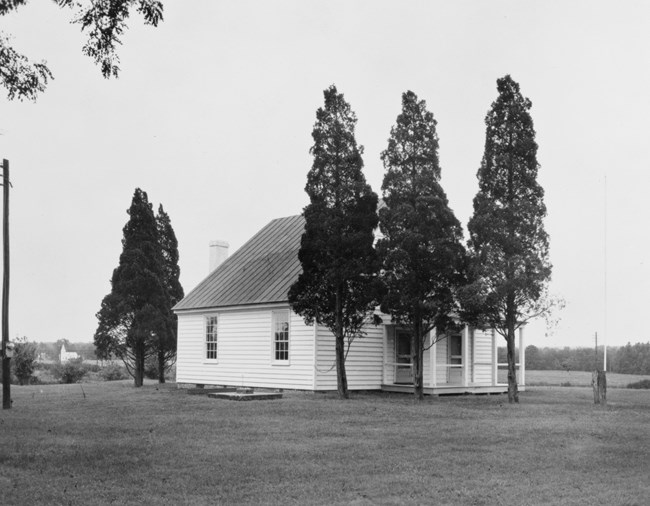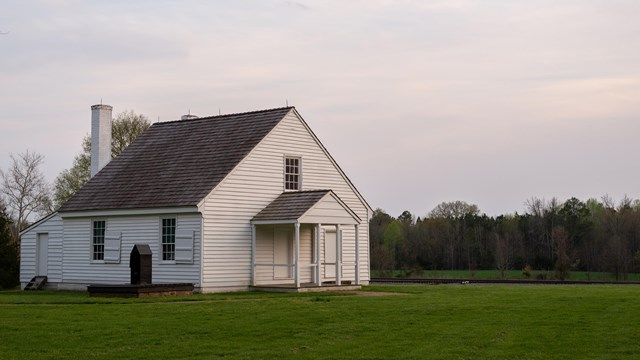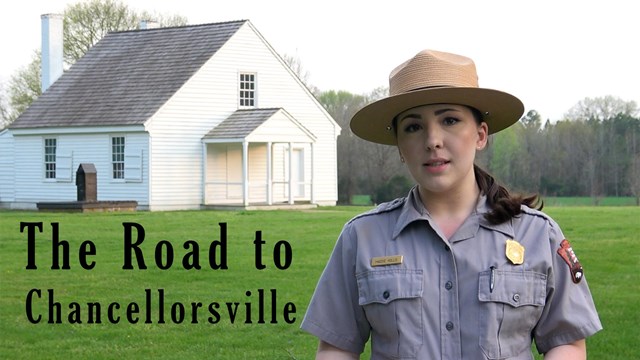
NPS Photo
Image Gallery
Image Gallery

Library of Congress About the Jackson Death SiteSince 1828, a small, unassuming building currently known as the Jackson Death Site has stood ten miles south of the city of Fredericksburg, Virginia. The building was once part of Fairfield, a small farm complex owned by John Thornton (later the Chandler family) and worked by enslaved labor. Other buildings that once stood within the vicinity of the Jackson Death Site included the farm home, outhouses, a smokehouse, and barns. Built not as a residence but as the farm's office, this building had no fixed purpose like most of the structures around it. Instead, the farm office was used for whatever the inhabitants needed at the time: that could mean simple storage or indoor workspace or file keeping. The Chandler family also used the building as a temporary living space for themselves and guests. As a slave labor farm, the building may have served as office space for slave overseers. 
Jackson Death Site Walking Tour
Explore the grounds and wider history of the Fairfield Plantation and Guinea Station, most famous as the place where Jackson died in 1863. 
The Road to Chancellorsville
Explore how the escalating pressure of two years of war impacted the Confederacy and its army leading into the Battle of Chancellorsville. |
Last updated: September 12, 2025
